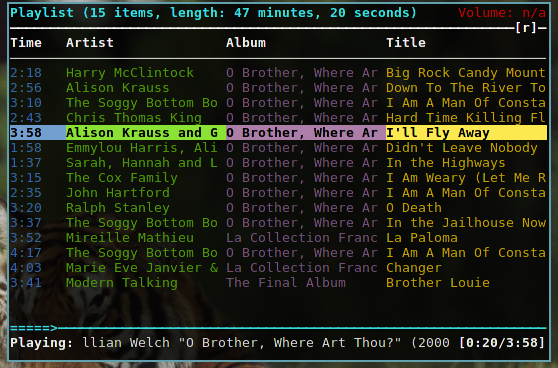

- #Music player daemon for mac mac os#
- #Music player daemon for mac movie#
- #Music player daemon for mac update#
- #Music player daemon for mac android#
- #Music player daemon for mac Pc#
#Music player daemon for mac android#
Usually, your device must be rooted in order to allow the app to capture the audio from the Android system.
#Music player daemon for mac movie#
#Music player daemon for mac Pc#
TuneBlade, transforming your PC into an Airplay streamer.Originally written for Volumio, but works with other DLNA/Openhome streamers too. Stream What You Hear (swyh-rs), does basically the same as SWYH above, but is smaller, faster, uses less resources, is still actively maintained and is written in Rust.If it doesn't work, you can also use the "HTTP Live Streaming" function, and indicate the provided URL to Volumio, creating a new Web Radio. Stream What You Hear (SWYH), transforming your PC into a DLNA streamer.You have several solutions to stream from Windows.Usually, what will happen is all the sound going to the speakers attached to the sending device will be redirected to a DLNA or AirPlay stream, that you then send to Volumio. However some setup may be needed on your other device to enable sending streams to Volumio. This protocol is now available on other non-Apple sources (see below)īoth protocols are implemented by default in your Volumio device and nothing needs to be configured there.It is used by default by iTunes, and on iPhone, iPad. AirPlay is an equivalent protocol to DLNA, but proprietary and developed by Apple.The Android port is experimental, incomplete and unstable. Through plugins and libraries it can play a variety of sound files while being controlled by its network protocol. Volumio is a UPnP Media Renderer front-end for MPD (the Music Player Daemon used in Volumio), thanks to upmpdcli Music Player Daemon (MPD) is a flexible, powerful, server-side application for playing music.It understands two protocols: UPnP/DLNA or AirPlay. But it is also able to receive an audio stream directly from devices connected on the local network, such as a smartphone or a computer: in this case, Volumio acts as a renderer, and converts the stream to sound, played through the attached audio device. ) or on the network (Spotify, web radio, DLNA server. Volumio usually uses music it finds locally (internal memory, USB disk. Stream audio to volumio Stream audio to Volumio Creating the image build scripts (Part 2).
#Music player daemon for mac mac os#
and runs on (at least) Linux and Mac OS X. Creating the image build scripts (Part 1) The target audience are power users who need an MPD client that is highly.Set up development environment for Volumio images.Set up development environment for backend.Set up development environment introduction.

After that you will need to find the SPI (i2C) control commands and which pins for power. Reading some of the other comments on here I'm like what? Ok the simplest way I can put this is you have the audio out so the first choice is do you plumb that through the pi (overkill I don't think you need to though that will probably mean you might need an amp of some sort). How do i make fm radio with these 2 components? I'm querying a musicpd server ( ) which outputs data about the player and the current song, the data comes out as multiple lines of key-value but I cook it nicely as json.
#Music player daemon for mac update#
Aim to update the public version shortly if there are no new issues (also, some small additions)! Even after making an initial release, I have so much I want to add to it like enabling customization of the rich presence and perhaps with a configuration file if I have time. Hey all, I've decided to learn a new programming language not so long ago and I decided to gain some experience by making a rich presence for MPD (Music Player Daemon, ). I used it (also Media Player Classic with K-Light Codec Pack, so lightweight!) for over a decade, but eventually switched to VLC since it has substantially improved over the past couple years.

I used to prefer GOM over VLC due to its much better UX (keyboard interface/hotkeys, playback process, included CoDecs, OSD, options). Lenovo laptops silently stripped of H.264 encoder in BIOS updates Also Media Player Classic automatically searches for subtitles. What’s a movie that ACTUALLY couldn’t get made nowadays? Is it possible that it's my laptop that somehow can't handle the video "graphics"?Īlternatively, try media player classic - a bit outdated, but should work for those files and is more lightweight. Any clean UI/UX video player for windows that's also light weight


 0 kommentar(er)
0 kommentar(er)
